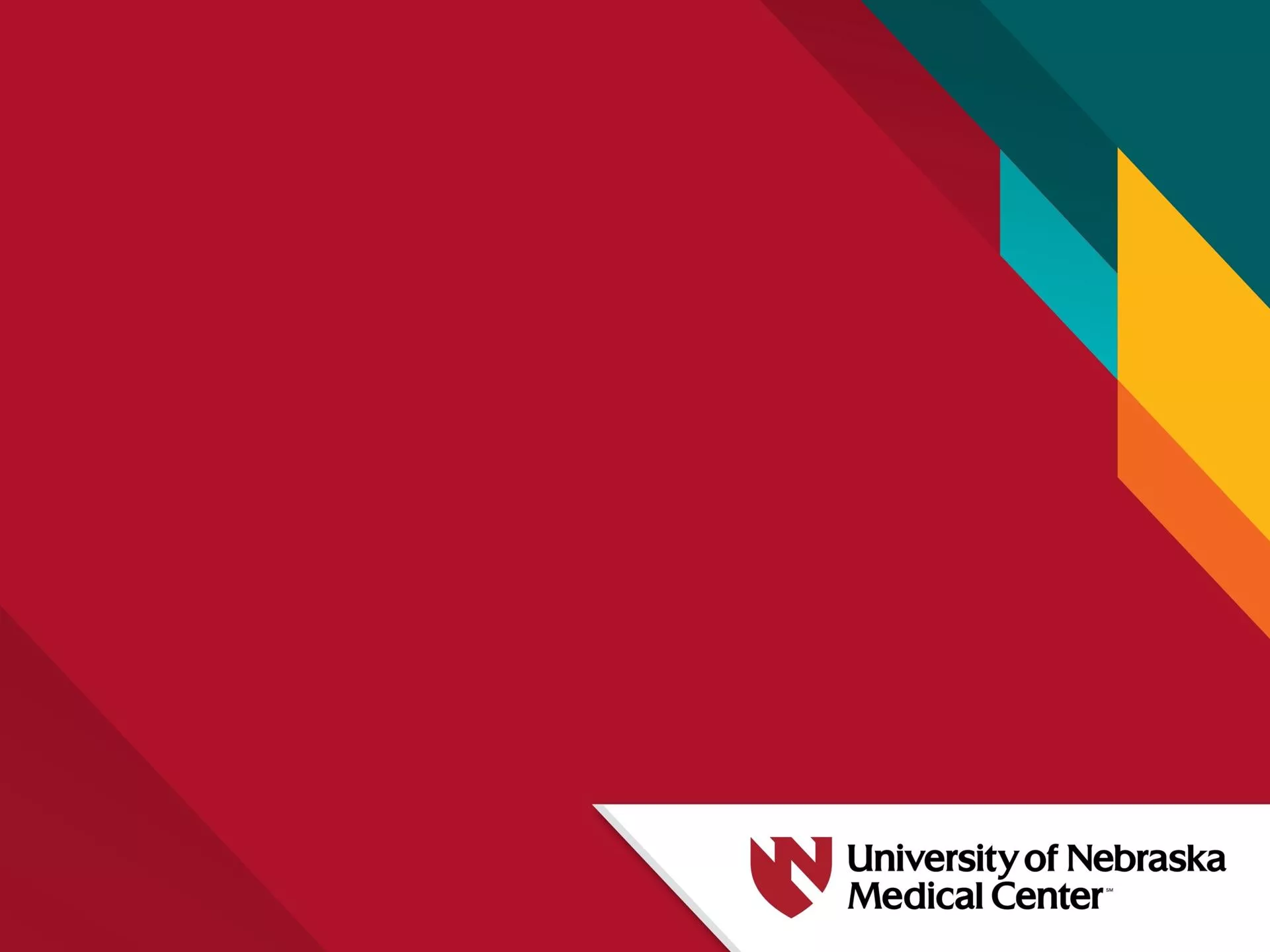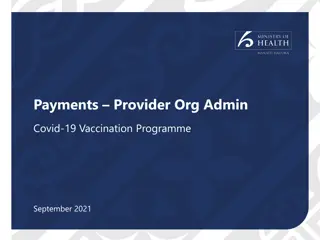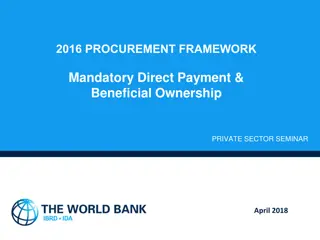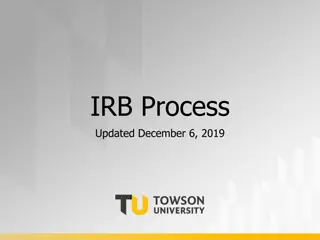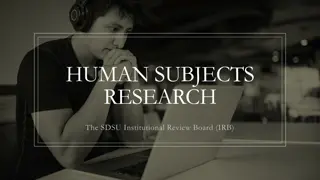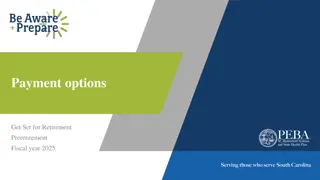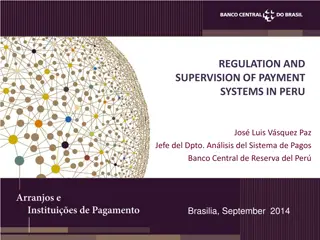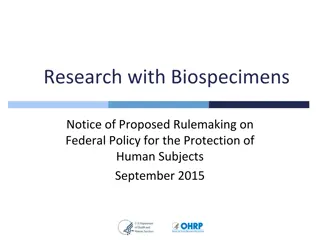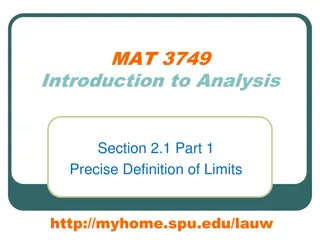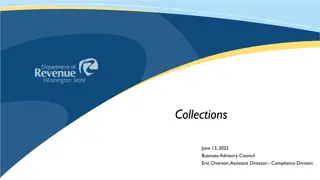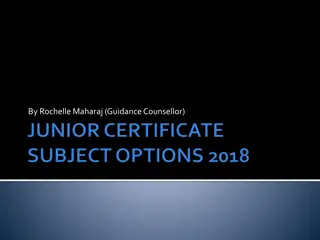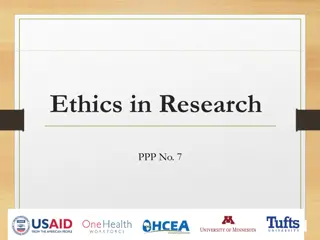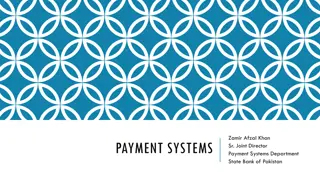Examining Payment Limits for Human Subjects Research
This article explores the necessity of setting limits on payment for human subjects in research. It delves into the role of Institutional Review Boards (IRBs) in protecting subjects and the balance between benefiting subjects and advancing research. It discusses how payments can increase participation and the potential concerns surrounding high payment amounts impacting subjects' reporting and protections.
Download Presentation

Please find below an Image/Link to download the presentation.
The content on the website is provided AS IS for your information and personal use only. It may not be sold, licensed, or shared on other websites without obtaining consent from the author.If you encounter any issues during the download, it is possible that the publisher has removed the file from their server.
You are allowed to download the files provided on this website for personal or commercial use, subject to the condition that they are used lawfully. All files are the property of their respective owners.
The content on the website is provided AS IS for your information and personal use only. It may not be sold, licensed, or shared on other websites without obtaining consent from the author.
E N D
Presentation Transcript
Limits on the Payment of Human Subjects: Are they needed? Joseph S Brown PhD University of Nebraska Omaha
Special Thanks to: Emily A. Largent, JD, PhD, RN Department of Medical Ethics and Health Policy University of Pennsylvania Perelman School of Medicine
Things we agree on: The IRB has, as a primary mission, the role of protecting human subjects. Among the many regulatory and ethical considerations supporting the protection, is the requirement that informed consent be free of coercion or undue influence Collectively, research (at least when properly reviewed) constitutes a public good. Although any particular study only presents the potential for benefit, collectively the public benefit is clear.
Collectively (again), clinical research (at least) creates benefits to subjects Either through a beneficial intervention Or through increased access to care
Thus, although the IRBs primary duty is to the subjects, they also have a duty to the research endeavor. Further, given the potential benefits to subjects and the public nature of the research endeavor, subjects may have a right to participate in research they deem beneficial. So, IRB s have not only an obligation to minimize obstructions to research, but an obligation to expand access to that research.
Payment as a way to increase participation: Note that we are speaking of payment not reimbursement. Reimbursement for actual expenses (at least in principle) allows a greater range of participants by removing a barrier to participation It also seems to lack the features that lead to concerns of undue inducement. We also note that payment does not serve as a coercive factor (in that it neither affirmatively (force) or passively (withholding critical care to force participation) mandates participation (e.g. Wertheimer & Miller, 2008) It works. Some of this will be seen in Dustin's data, but if it didn t work commercial sponsors would forgo the expense
Concerns: High Payments might influence subjects willingness to report things that might prevent participation or end participation. (e.g., conditions that effect eligibility or protocol violations) High Payments might commodify participation and lower protections ( They knew the risks and they got paid ) (e.g., Macklin, 1989) High payments might induce subjects to take risks they might not otherwise take (that is, participate in studies they would otherwise consider too risky) Of course they might, but is this a problem? Emmanuel (2005) argues that with the IRB review comes a favorable risk benefit ratio, it precludes subjects taking an inappropriate risk. However, risk assessment may be highly individual and may change over the course of a study.
High payments might induce an unjust situation in which those of lower means are affected more by inducements. Thus, the poor might assume a greater share of research risks This might be seen as particularly problematic given income-based health disparities.
Undue & Unjust Inducements: What does the data say? Dustin Krutsinger M.D., M.S. University of Nebraska Medical Center 2023 Protection of Human Subjects Conference Limits on the payment of subjects: Are they needed? Omaha, Nebraska September 15, 2023
Dustin Krutsinger, M.D., M.S. University of Nebraska Associate Professor of Medicine Division of Pulmonary, Critical Care & Sleep Medicine Surrogate decision making for critical care trial enrollment Non-financial nudges to encourage enrollment Disparities in critical care trial participation Scott D. Halpern, M.D., Ph.D. University of Pennsylvania John M. Eisenberg Professor of Medicine, Epidemiology, and Medical Ethics & Health Policy Director, Palliative and Advanced Illness Research (PAIR) Center Director, Behavioral Economics to Transform Trial Enrollment Representativeness (BETTER) Center Financial incentives for research participation, undue & unjust inducement Majority of slides courtesy of Scott Halpern MD PhD
Pay beyond compensation Incentivize Compensates for Risk Communicates Value Justice
Genuine concerns with payment 1. Payment may be an undue inducement 2. Payment may be an unjust inducement
Incentives for RCTs: Undue inducement? Payment: p = 0.001 Payment-by-risk interaction: p = 0.12 Halpern et al, Arch Intern Med 2004
Incentives for RCTs: Unjust inducement? Payment-by-income interaction: p = 0.09 Halpern et al, Arch Intern Med 2004
Outcomes: Enrollment & Risk Halpern et al, JAMA Internal Med, 2021
Unjust inducement: income iOR 1.26, p < 0.001 iOR 1.21, p = 0.01
Unjust inducement: financial well-being iOR 1.04, p < 0.001 iOR 1.17, p = 0.003
Tests for undue inducement Primary: incentives will not modify (inverse) relationship between risk perception and enrollment rate by > Secondary: incentives will not significantly modify (direct) relationship between favorable research attitudes and enrollment rate
Ethical benefits of financial incentives? Communicates value, compensates for risk, justice Cost & time savings Emanuel EJ. The costs of conducting clinical research J Clin Oncol 2003 Counter therapeutic misconception Dickert N, Grady C. What s the price of a research subject? N Engl J Med 1999; 341: 198-203. Closer IRB scrutiny of risks Emanuel EJ. Undue inducement: Nonsense on stilts? Am J Bioethics 2005; 5: 9-13. Closer participant scrutiny of risks Cryder et al. Informative inducement: Study payment as a signal of risk. Soc Sci Med 2010; 70: 455-64
Does the study procedure seem: Yes No More risky than talking on the cell phone while driving? More risky than receiving the flu vaccine? More risky than flying on a plane? Riskiness ratings $25: 2 (0 4) $1000: 3 (1 5) p < 0.05 More risky than driving 15 mph over the speed limit? More risky than taking 3 times the recommended dose of a pain killer? More risky than receiving stitches? More risky than riding a motorcycle with no helmet? More risky than getting a body piercing? More risky than bungee jumping? Cryder et al, Soc Sci Med, 2010
Higher incentives are associated with greater information seeking Cryder et al, Soc Sci Med, 2010
Ethical benefits of financial incentives? Communicates value, compensates for risk, justice Cost savings Emanuel EJ. The costs of conducting clinical research J Clin Oncol 2003 Counter therapeutic misconception Dickert N, Grady C. What s the price of a research subject? N Engl J Med 1999; 341: 198-203. Closer IRB scrutiny of risks Emanuel EJ. Undue inducement: Nonsense on stilts? Am J Bioethics 2005; 5: 9-13. Closer participant scrutiny of risks Cryder et al. Informative inducement: Study payment as a signal of risk. Soc Sci Med 2010; 70: 455-64 Incentives MAY improve enrollment diversity Unpublished data
Incentives may improve enrollment diversity Incentive Black patients White patients $0 17% 30% $200 36% 36% $500 46% 49%
Conclusions 1. Incentives work for some, but not all trials 2. Data on undue & unjust inducement are reassuring so far, but need evaluated in more trials with higher risk 3. With ethical concerns not yet manifesting, and real benefits to compensation, it may be time to shift the burden of proof to those who would bar incentives
UNMC/UNO IRB policies: Policies apply to greater than minimal risk studies. The area of greatest concern here is that subjects might take inappropriate risks. In addition to the IRB review of risk benefit ration, the determination that the risks are minimal minimizes this concern. Reimbursement is encouraged as is payment of subjects. This allows maximum participation and avoiding concerns that money would prevent participation for some. Payments are capped at $20 per hr. This is based on a wage replacement model. This payment is seen as roughly equivalent of what a subject could earn outside of research. This minimizes concerns of undue inducement as subject could earn this money with alternative employment.



